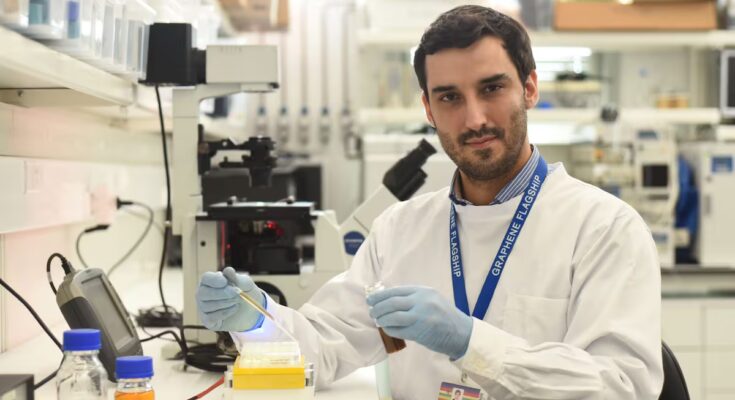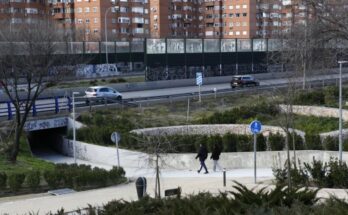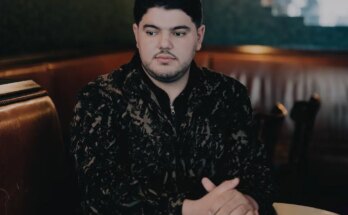The main obstacle to the development of photothermal therapy (PTT) to fight cancer has been its high cost and the specialized logistics it requires. Generating the heat needed to destroy cancerous tumors requires precise and expensive clinical lasers, as well as advanced hospital infrastructure and highly trained personnel to operate them. Joint research between the University of Porto and the University of Texas seeks to overcome this obstacle through a “mobile and low-cost” method, using LED lights that produce localized heating. “LEDs are everywhere, they are very cheap, light, portable and much safer than lasers,” Artur Pinto, one of the leaders of the project in Portugal, explains to EL PAÍS.
PPT increases the temperature in a specific area of the body, in this case tumors. The heating is channeled through a photothermal agent injected into the body, which absorbs artificially generated light and turns it into heat to destroy tumor tissue. The therapy traditionally used powerful lasers as the light source, and the most popular material used to capture that light was usually gold particles, due to their absorption capacity and biocompatibility. The study by the Porto and Texas team, published in the journal ACSswap these bases for common LED lights and atomic sheets of tin oxide, a material similar to graphene.
Unlike other photothermal therapy studies, the tests here have not yet been conducted on humans. The application was in three-dimensional models of vascularized tumors, that is, with blood vessels that better imitate a real environment. The findings show that, during 30 minutes of exposure, up to 92% of skin cancer cells and 50% of colorectal cancer cells were eliminated. There were a total of four irradiation cycles, after which the nanosheets remained intact.
Pinto assures that these nanosheets – “millions of times thinner than a human hair” – offer greater thermal efficiency, potential biocompatibility and affordable production. “Let’s imagine a tumor inside the body: although it can grow, it is confined to a limited region and surrounded by normal tissue. If we concentrate the process on that tumor, directly injecting nanoparticles or covering it, in the case of superficial tumors such as skin tumors, and then direct the light on that area, we destroy only the tumor cells,” he explains.
The light-transforming particles, or photothermal agent, were obtained through a complex electrochemical method. The resulting material is one atom thick, so it can be easily exfoliated, unlike gold particles, which are not easily removed from the body. Pinto explains it in detail: “We started with graphene and optimized it, adjusting its degree of oxidation. We need to find an intermediate point to maximize light absorption, because if we take too much oxygen out of the material, it loses stability in the water and ends up settling. But if we leave it with too much oxygen, it absorbs less light.”
The goal in the latest studies on photothermal therapy is to reduce the amount of material introduced into the body as much as possible, to minimize toxicity. For this reason, graphene is presented as a safe option: it is composed only of carbon and a small amount of oxygen. The material must also reach a precise temperature to target only tumor cells. “We work within a thermal window between 45 and 50 degrees Celsius; above this range even normal cells would start to damage. The exact temperature depends on several factors: the type of nanomaterial used, the location and size of the tumor, among others,” explains Pinto. The process is also applied to healthy cells to ensure that normal tissue is not damaged.
“We managed to destroy the tumor cells and, in addition, stimulate an immune response that causes the body to infiltrate defensive cells into the tumor,” says Pinto, and ensures that the destroyed tumor cells release signals that activate the immune system, preventing future relapses.
The therapy, explains the Portuguese researcher, can be used alone in less aggressive tumors: “For example, in skin cancer, it can offer better aesthetic results because it does not burn the tissues. Many of these tumors appear in areas such as the face or neck and current treatments with laser or cryotherapy usually leave scars.” Even so, Pinto reminds that this does not completely replace conventional treatments, but rather works better as a complement to more controlled alternatives.
An ideal use would be as a maintenance treatment to destroy residual tumor cells. As it is a localized and repeatable treatment, it can be applied after conventional processes. However, Pinto points out that the biggest advantage is the accessibility and low price. “LEDs make it possible to apply the treatment not only in hospitals, but also in health centers, rural clinics or even in places with few resources, such as some regions of Africa. Even in home treatments, with the assistance of a nurse, for some types of cancer, such as skin cancer,” he underlines. The entire experimental set, with the ability to irradiate up to 24 samples simultaneously, costs around 510 euros and its easy reproducibility could allow for multiple simultaneous treatments.
“You can have different systems in a hospital, in health centers or within the national health system. Doctors could be trained to apply treatments without the need for patients to travel long distances,” says Pinto. It is already working on the next step before reaching clinical trials: perfecting all the technical details to ensure that the system always works the same way and without risk before applying it for the first time on human patients.
Trends It is a project of EL PAÍS, with which the newspaper aspires to open a permanent dialogue on the great future challenges that our society must face. The initiative is sponsored by Abertis, Enagás, EY, Iberdrola, Iberia, Mapfre, Novartis, the Organization of Ibero-American States (OEI), Redeia and Santander, WPP Media and strategic partner Oliver Wyman.
You can sign up Here to receive the weekly newsletter of EL PAÍS Tendencias, every Tuesday, from journalist Javier Sampedro.



